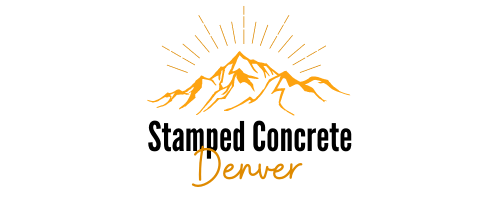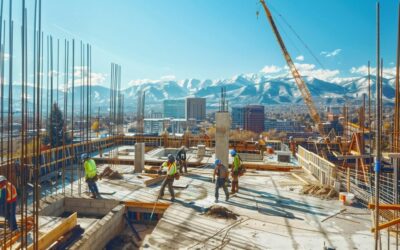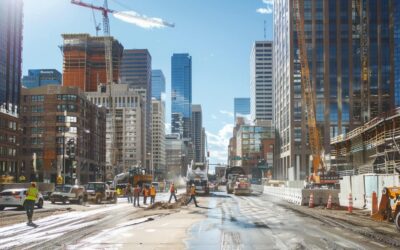When you’re planning concrete projects around your Denver home, you might overlook a critical factor: drainage. You may not realize that improper drainage can lead to water accumulation, which weakens your surfaces and invites costly repairs. The unique freeze-thaw cycles in Denver can exacerbate these issues, leading to cracks and erosion that compromise your investment. So, what can you do to ensure your concrete remains durable and aesthetically pleasing? Understanding effective drainage solutions is key, and it could save you significant time and money in the long run.
Importance of Proper Drainage
Proper drainage is crucial in concrete projects for several reasons.
First, it prevents water accumulation, which can weaken the concrete over time. When water pools, it can lead to cracking and erosion, compromising the structural integrity of your project.
Second, effective drainage helps maintain the appearance of your concrete surfaces, reducing the likelihood of unsightly stains or discoloration caused by trapped moisture.
Additionally, proper drainage minimizes the risk of mold and mildew growth, which can pose health hazards.
Lastly, it ensures that your investment lasts longer, saving you money on costly repairs or replacements down the line.
Common Drainage Issues
Water management can often become a challenge in concrete projects, leading to various common drainage issues.
One major issue is poor grading, which can cause water to pool around your foundation instead of draining away.
Another problem is clogged gutters or downspouts, allowing water to overflow and saturate the soil near your concrete structures.
Additionally, inadequate drainage systems can lead to erosion, compromising the stability of your project.
You might also encounter drainage from neighboring properties, which can further exacerbate water accumulation.
Lastly, using the wrong materials or installation techniques can create barriers that prevent proper water flow.
Addressing these issues early on is crucial to ensure the longevity and integrity of your concrete work.
Impact on Concrete Longevity
When drainage issues arise, they can significantly shorten the lifespan of your concrete structures.
Water accumulation around your home can lead to increased pressure on the concrete, causing cracks and surface erosion. These problems not only affect the aesthetic appeal but also compromise the integrity of your foundation, driveways, and patios.
If water seeps into the cracks, it can freeze during colder months, expanding and further damaging the concrete. This cycle of water infiltration and freeze-thaw can lead to costly repairs and premature replacement.
By ensuring proper drainage, you’re investing in the durability and longevity of your concrete installations.
Protect your investment by addressing drainage concerns before they escalate into significant issues that threaten the stability of your home’s concrete elements.
Solutions for Effective Drainage
Effective drainage solutions are crucial for maintaining the integrity of your concrete projects.
Start by grading the land around your home to direct water away from concrete surfaces. Installing gutters and downspouts can efficiently channel rainwater, preventing pooling.
You might also consider permeable pavers, which allow water to seep through, reducing runoff. Additionally, using drainage pipes or trenches can help divert excess water from concrete areas.
Regularly inspect and clean these systems to ensure they’re functioning correctly. If your property faces significant drainage challenges, you may want to consult a professional for tailored solutions.
Implementing these strategies not only protects your concrete but also enhances the overall durability of your outdoor spaces.
Long-Term Cost Savings
Implementing proper drainage solutions not only protects your concrete projects but can also lead to significant long-term cost savings.
When water collects around your concrete, it can cause cracks, erosion, and other damage that necessitates costly repairs or replacements. By investing in effective drainage systems now, you’re preventing future expenses and extending the lifespan of your concrete structures.
Additionally, well-drained areas require less maintenance, reducing ongoing upkeep costs. You’ll also avoid potential issues with mold and mildew, which can lead to health risks and further expenses.
In the long run, those initial costs for drainage solutions are minimal compared to the savings you’ll enjoy by keeping your concrete in top condition and minimizing repair needs.
Frequently Asked Questions
How Does Drainage Affect Landscaping Around Concrete Installations?
Drainage significantly impacts landscaping around concrete installations.
It prevents water pooling, protects plant roots, and maintains soil stability. Proper drainage keeps your landscape healthy, ensuring plants thrive while minimizing potential damage to the surrounding concrete surfaces.
What Are the Signs of Poor Drainage in Concrete Areas?
You’ll notice signs of poor drainage in concrete areas through puddles forming after rain, cracks developing in the concrete, or erosion around edges.
These issues can lead to further damage if not addressed promptly.
Can Drainage Issues Lead to Pest Problems?
Yes, drainage issues can definitely lead to pest problems.
Standing water attracts insects and rodents, creating a habitat for them.
How Often Should Drainage Systems Be Inspected or Maintained?
You should inspect drainage systems at least once a year and after heavy storms.
Regular maintenance helps you catch potential issues early, ensuring your property’s drainage functions effectively and prevents costly repairs down the line.
What Materials Are Best for Effective Drainage Solutions?
For effective drainage solutions, you’ll want to use materials like perforated pipes, gravel, and geotextiles.
These components work together to ensure water flows properly, preventing pooling and protecting your concrete structures from damage.
Conclusion
In conclusion, prioritizing proper drainage in your concrete projects is essential for protecting your home from water damage. By addressing common issues and investing in effective solutions, you’ll enhance the longevity of your surfaces and prevent costly repairs down the line. Don’t underestimate the impact of good drainage; it’s a small step that leads to significant benefits. Ensure your concrete remains strong and beautiful by making drainage a top priority in your Denver home.



